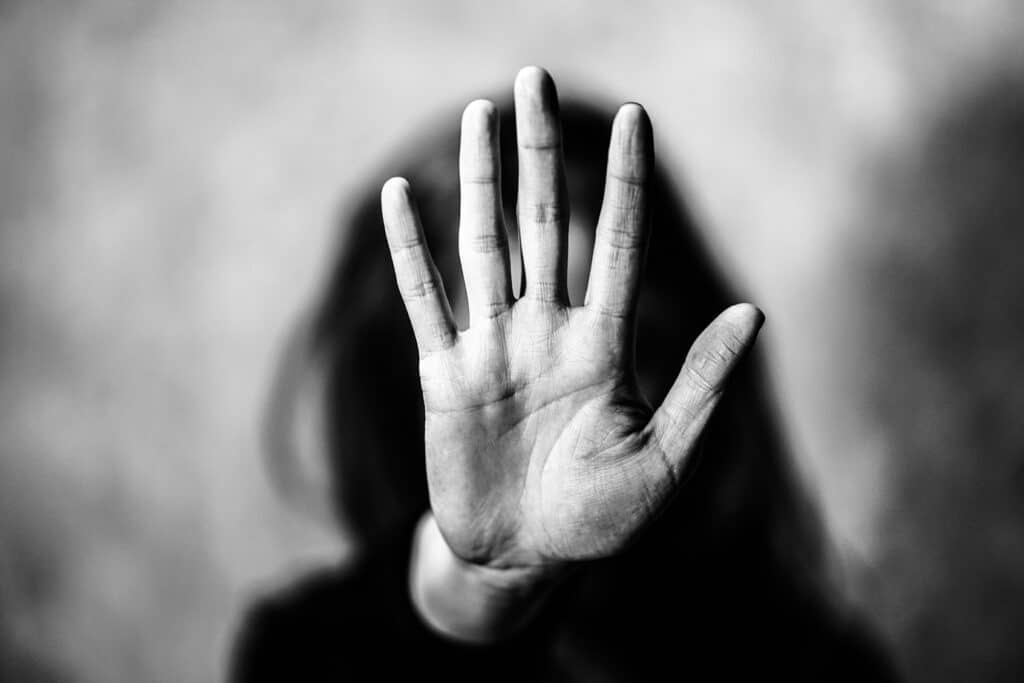A woman has been killed at her workplace in Adelaide’s south west after a man allegedly stabbed her on Wednesday.
The South Australian police have named the victim as Julie “Julez” Seed, 38, in what they suspect was “a random attack”. A second woman, aged 50, sustained injuries and was taken to hospital where she’s reportedly in stable condition. A 30-year-old man has been arrested, and police said he is expected to be charged with murder.
With this latest life lost, the total number of women killed by violence in 2023 ticks over to a chilling 61.
In 2022, that number sat at 57 at the end of the year, according to statistics from Destroy the Joint. Just last week, Women’s Agenda reported that Australia had surpassed this number in a tragic conclusion to the annual 16 days of activism against gender-based violence.
Since then, another woman was killed in a stabbing at the National Zoo and Aquarium in Canberra. On Tuesday, a man was charged with her murder.
While it can be hard to make sense of all this violence, one thing is for certain— when it comes to ensuring women’s safety in Australia, we’ve found ourselves in a very grim place this year.
One woman is killed by an intimate partner every week, while Indigenous women are eight times more likely than non-Indigenous women to be murdered.
One in six women have experience physical or sexual violence by a partner, and over half of women in their twenties have experience sexual violence.
And for those women fleeing family violence, only 3 per cent receive the long-term housing they need.
The director of the National Women’s Safety Alliance, Katherine Berney, has shared her thoughts on Women’s Agenda this week on these unacceptably high domestic violence rates.
“This year, there have been close to 50,000 articles published specifically focused on violence against women. There have been so many words written, roundtables, conferences, and discussion. People are anguished, they are angry and rightly so,” she says
“These statistics paint a horrendous and uncomfortable picture about how we value survivors’ experiences across the nation.”
Steps taken in 2023 to improve women’s safety
It’s obvious that more must be done to prevent the epidemic of violence against women that Australia is facing. Nevertheless, there have been some proactive steps taken this year for women’s safety that are worth highlighting.
For the first time, the federal government set targets for ending violence against women and children, including a dedicated Aboriginal and Torres Strait Islander action plan. The five-year plan aims to reduce the number of women killed by intimate partner violence by 25 per cent each year.
As part of the National Plan to End Violence Against Women and Children 2022-2032, the Albanese government announced a $15 million investment into First Nations-led research on family, domestic and sexual violence.
Australia’s National Research Organisation for Women’s Safety (ANROWS) launched a five-year plan to address the next steps towards ending violence against women. This framework is helping guide researchers, funders, policymakers, survivor advocates and social impact organisations who work in the domestic and family violence space.
In November this year, the New South Wales government introduced new legislation against choking. The proposed amendments place serious strangulation offences into definitions of “serious violence offence” and “serious sex offence”, which are in the same category as other crimes including murder and manslaughter.
The telephone helpline 1800RESPECT also expanded its services to provide support for victims of family, domestic and sexual violence via SMS text message.
And, this month, the South Australian government has announced it will hold a royal commission into family and domestic violence following the horrific alleged murders of several women in recent weeks.
With all of this momentum towards ensuring women’s safety, many are asking themselves why we aren’t seeing a change. The number of women being killed by violence has increased this year and the statistics are painting a horrendous picture.
“If you want to make change, sit with these statistics, feel uncomfortable with them,” Katherine Berney says.
“Resist the temptation to look for cause and effect and to think ‘this won’t happen to me, I’m way more careful’. Start from a position of empathy rather than framing what interventions from the victim could have prevented the violence that has occurred.”
“The simplest thing that anyone can do to make change in domestic family and sexual violence is to start by believing.”
If you or someone you know is experiencing, or at risk of experiencing, domestic, family or sexual violence call 1800RESPECT on 1800 737 732, chat online via 1800RESPECT.org.au or text 0458 737 732.
If you are concerned about your behaviour or use of violence, you can contact the Men’s Referral Service on 1300 766 491 or visit www.ntv.org.au.
Feeling worried or no good? No shame, no judgement, safe place to yarn. Speak to a 13YARN Crisis Supporter, call 13 92 76. This service is available 24 hours a day, 7 days a week.
In an emergency, call 000.


